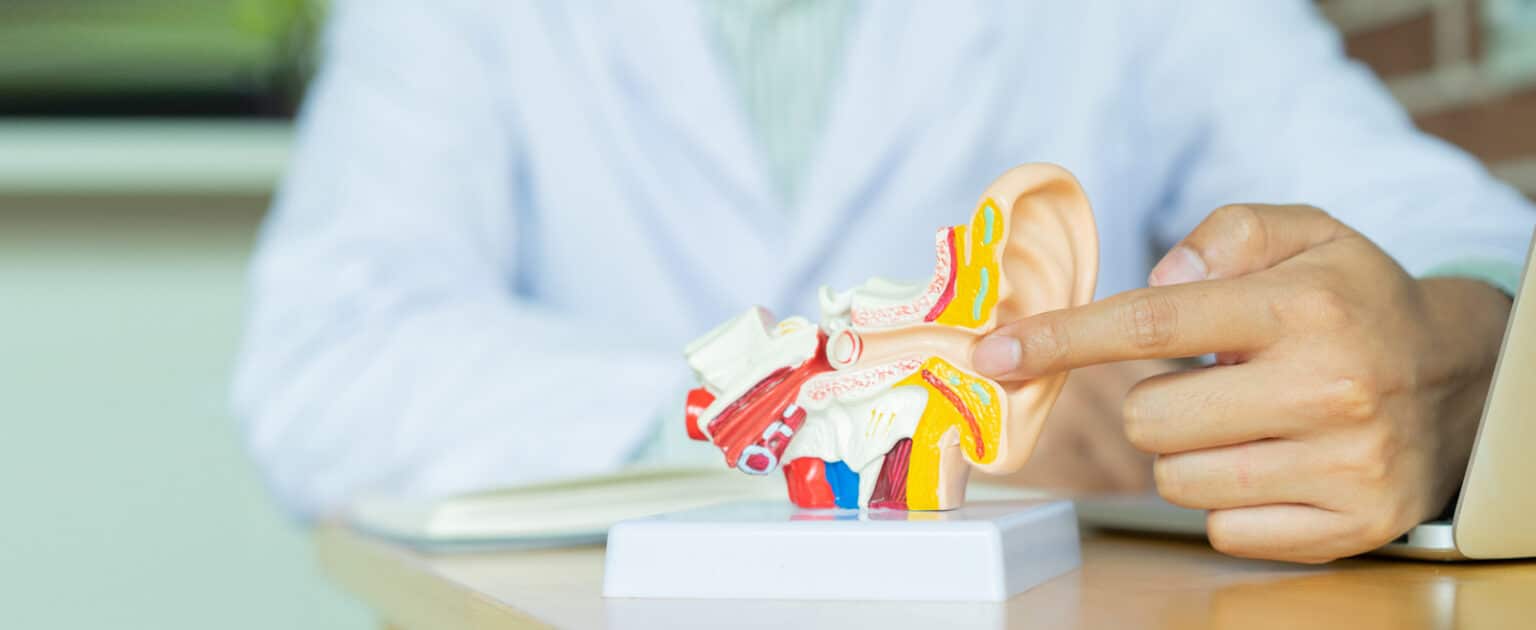You hear every day. Because it’s an everyday process, you may take for granted the complexity of the hearing process. Consider: if you tap a pencil on a desk, you hear the tap instantaneously; no silent pause between the action that makes the sound wave and hearing the sound. But the sound wave created by that pencil actually has to make a long journey through many parts of the head in order for you to perceive it.

The Sound Wave’s Journey
Sounds travel as sound waves: vibrations caused by a source (like a pencil striking a desk) that travel through the air. When a sound wave reaches your head, these are the steps it follows for you to hear it.
Outer Ear
The visible part of your ear, called the “auricle” or the “pinna,” catches sound waves and directs them into the ear canal like a funnel. The pinna sticks out slightly and points toward the front to prioritize gathering sounds that come at you from the front. The curls and ridges that make the familiar shape of an ear lead the sound down into the canal to the eardrum. The sound waves strike the aptly named eardrum, a thin membrane that vibrates and reverberates the sound into the middle ear, just like a drum.
The ear canal is actually quite long. It is in the ear canal that earwax is produced. Earwax keeps the canal clean and moisturized.
Middle Ear
Attached to the other side of the eardrum are the ossicles: tiny sound-conducting bones. These three bones, called the malleus, incus and stapes, amplify the vibrations from the eardrum and conduct them deeper into the ear. The ossicles are also the smallest bones in your whole body.
The malleus, incus and stapes form a chain: the eardrum vibrates, which sets the malleus in motion, which sets the incus in motion, which sets the stapes in motion, which then delivers the vibrations into an organ called the cochlea through a small oval-shaped window. Each transfer amplifies the vibrations from the eardrum.
Inner Ear
The cochlea is the central organ of the inner ear regarding the auditory system. It is a spiral-shaped structure filled with cochlear fluid and lined with tiny hair cells called stereocilia. The cochlear fluid moves and ripples in response to the vibrations that come in through the oval window, and the stereocilia vibrate in the cochlear fluid as it ripples over them.
The stereocilia are sensory cells, and they translate their movement in the cochlear fluid into electrical signals by waving back and forth and bumping against the walls and each other. They then send these electrical signals up the auditory nerve and to the brain.
Auditory Processing Center
The relay race from the outer ear to the inner ear ends at the auditory processing center in the temporal lobe area of the brain. Until now, the sound information from the sound wave has been moved from one place to another, but it is here in the brain where the information becomes a sound you hear.
The auditory nerve carries the cochlea’s electrical signals to the temporal lobe, where your brain will interpret the information and create sound that you perceive, understand and react to.
Why It Matters
Understanding hearing is key to understanding hearing loss. By knowing the mechanisms that create hearing, we can protect and empower them as necessary. For example, hearing aids help transmit sounds directly to the middle ear through the use of a microphone and speaker. Your audiologist is knowledgeable in hearing and the auditory process, so if you are suffering from hearing loss or are considering hearing aids, call Palmetto ENT & Allergy today.
